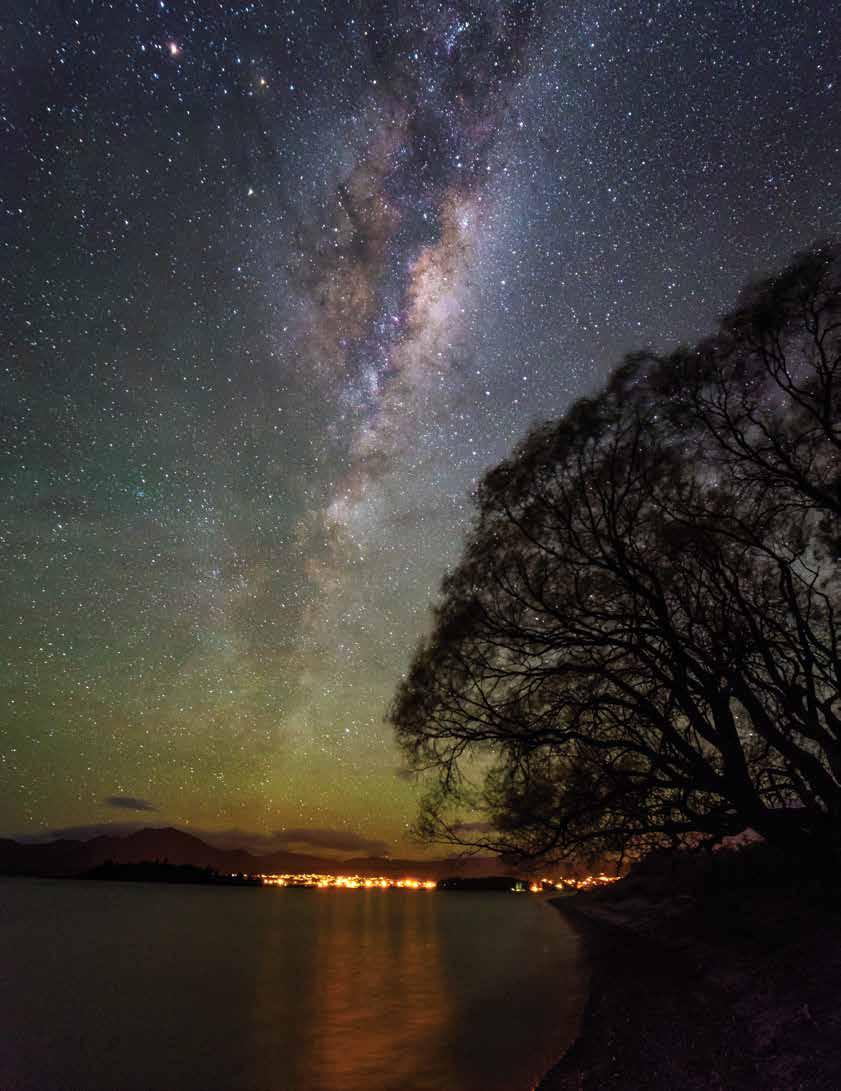
SUMMER 2017 Ripon celebrates the Class of 2017 Total solar eclipse coming Aug. 21 One class helped launch myriad science careers Expanding Our Horizons MAGAZINE
Summer 2017
VOLUME 50, ISSUE No. 2
RIPON COLLEGE SOCIAL NETWORKS
facebook.com/ripon.college
flickr.com/photos/ripon_college
instagram.com/riponcollege
linkedin.com/company/ripon-college
twitter.com/riponcollege
vimeo.com/riponcollege
youtube.com/riponcollegevideo
ripon.edu
Ripon Magazine (ISSN 1058-1855) is published twice annually by Ripon College, 300 W. Seward St., Ripon, WI 54971-0248. Postage paid at Ripon, Wisconsin. Copyright © 2017 Ripon College
POSTMASTER: Send address changes to Ripon Magazine, PO Box 248, Ripon, WI 54971-0248
Editor: Jaye Alderson, email: AldersonJ@ripon.edu, phone: 920-748-8364
Editorial Assistants: Melissa Anderson ’02, Ric Damm and Mike Westemeier
Student Assistants: Tessa Dillenbeck ’17, Mra Than ’17 and Megan Sohr ’18
Design: Ali Klunick
Photography: Ric Damm and Jim Koepnick
Office of Constituent Engagement: 920-748-8126
Ripon College prepares students of diverse interests for lives of productive, socially responsible citizenship. Our liberal arts and sciences curriculum and residential campus create an intimate learning community in which students experience a richly personalized education.
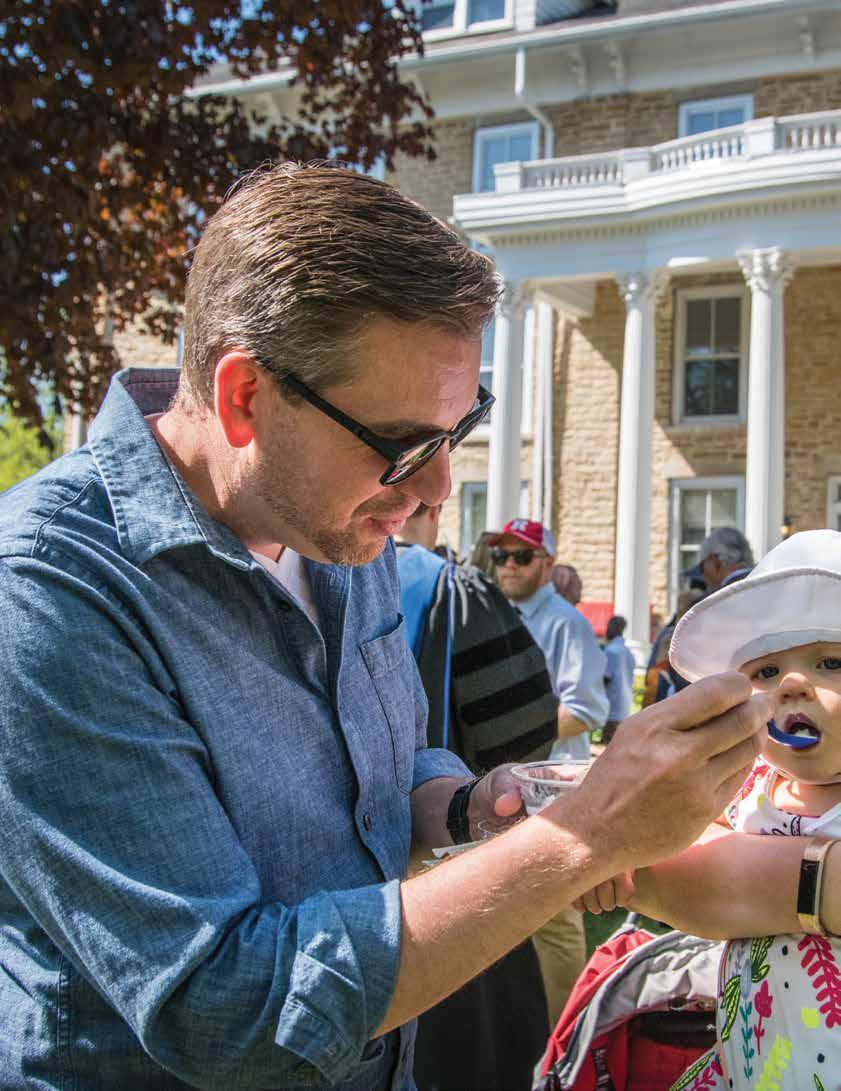
INSIDE
4 CATALYST’S NEW CONTEXTS
The new Catalyst curriculum is offering students different ways of looking at world issues, and new opportunities for faculty to collaborate and share knowledge.
6 COMMENCEMENT 2017
Ripon College celebrates its newest class of graduates and where some of them are heading.
10 ‘GREAT AMERICAN ECLIPSE’
On Aug. 21, most people in the United States will experience a partial solar eclipse and those along a 70-mile path a total solar eclipse. Read about this upcoming wonder, as well as what numerous alumni are achieving in the areas of space, physics and related endeavors.

22 ALUMNI PERSPECTIVES ON SPACE
Do you have a favorite memory related to space exploration or natural phenomena in the heavens? Would you want to take a space flight in the future? See what some of your fellow alumni have to say.
26 PLANET WALK ON THE PRAIRIE
Through a collaboration of astronomy students and ceramics students, a microcosm of our solar system is presented on a new Planet Walk within the Ceresco Prairie Conservancy.
DEPARTMENTS
28 Sports
32 Around the Clocktower
36 Remarkable Ripon
ON THE COVER:
Photo taken by Alex Tande ’12 in May 2016 of the night sky over Lake Wanaka in New Zealand.
PHOTO: Ryan Kane, head coach of men’s basketball, and Paige Kane, individual campus visit coordinator, share Culver’s frozen custard with their daughter, Sadie, at the 2017 Ripon College Commencement.
The Final Frontier
T
he day before Ripon begins its fall semester (Monday, Aug. 21, 2017) the United States will experience a total solar eclipse, visible for the first time coastto-coast in almost a century. While the best viewing spots won’t be in Wisconsin (southern Illinois, however, is right on the eclipse’s pathway), it will be an opportunity for Americans to again be reminded of the vastness of our solar system and our desire to understand its mysteries.
Ripon (and Green Lake, too) are great places for amateur astronomers to observe the nighttime skies. And when I look at the heavens during a Wisconsin summertime evening, arrayed full of stars, I think of a favorite poem by Elizabeth Bishop, an American who had a special connection to Brazil. Describing the paper fire balloons that Brazilians launch into the skies to celebrate St. John’s Day every June 24, which also happens to be my birthday, she wrote in The Armadillo :
Once up against the sky it’s hard to tell them from the stars — planets, that is — the tinted ones: Venus going down, or Mars,
or the pale green one. With a wind, they flare and falter, wobble and toss; but if it’s still they steer between the kite sticks of the Southern Cross, receding, dwindling, solemnly and steadily forsaking us, or, in the downdraft from a peak, suddenly turning dangerous.”
For those of us who view space with amateur wonder, Ripon College’s achievements in the sciences, including space exploration and discovery, are remarkable. In this issue, you’ll get to read about some of the College’s amazing stories. For example, William F. Meggers (Class of 1910) has a crater on the moon named after him. Students of Associate Professor of Art Mollie Oblinger, with assistance of astronomy
students of Assistant Professor of Physics
Leah Simon, recently completed an interactive planet walk for local stargazers on the prairie just west of campus. Jeffrey Bantle (Class of 1980) is a former NASA flight engineer. Jennifer White (Class of 2003) is engineer at NASA’s Goddard Space Flight Center and the NOAA Satellite Operations Facility. There is even a remarkable group of alumni who all took the same physics class at Ripon, interconnected throughout their lives and now all work for NASA. And Spencer Reisbick (Class of 2014) is attending a Ph.D. program in chemical physics and material science at the University of Minnesota where he’s doing research on electronic device materials so small they cannot be seen by most microscopes. Of course, make sure to check out the incredible array of graduate schools and job opportunities that the Class of 2017 lists as their next destinations. Is there a space traveler in the group? As the 21st century progresses, it sure seems possible. To keep the analogy going, every spring Ripon College launches newly minted grads into the galaxies, so to speak. We are proud that our graduates will push the boundaries and new frontiers of research, teaching and discovery, whether it is in space, poetry, law or medicine. So here’s to the Class of 2017! Live long and prosper. And may the force (of Ripon) be with you, always.
ZACH P. MESSITTE, PRESIDENT

2 | RIPON College
PRESIDENT
RELAXING IN THE SUN, 1906
Little is known about these beautiful, cyanotype prints from 1906, except that they were taken of Ripon College students on a sunny, gorgeous day. The location is Tuleta Hills on the southern shore of Green Lake, about seven miles from the College.


SUMMER 2017 | 3
1906 RIPON
NEW FRONTIERS IN LEARNING: The pathway to creating a Catalyst course

4 | RIPON College YEAR TWO CATALYST
Details of “Property,” by artist Nick Cave. This is one work that will be featured in “Pickers and Artists: Culture in Antiques and Art.”
The Catalyst curriculum is a five-course Concentration in Applied Innovation that launched in the fall of 2016. Catalyst consists of five seminars, two in the first year, two in the sophomore year, and the applied innovation seminar in the junior year. It rigorously develops the 21st-century skills that employers seek while streamlining the path to graduation.
The first semester of 210 Catalyst courses — focusing on intercultural competence — begins in the fall of 2017. The courses all are new and are designed to help students identify and challenge biases and assumptions, and become attentive to ways in which our own cultural assumptions shape perception. The courses also begin to develop awareness of and empathy for the worldviews of other cultures.
One new course is “Pickers and Artists: Culture in Antiques and Art,” team-taught by Associate Professor of Sociology Jacqueline Clark and Associate Professor of Art Mollie Oblinger. They are combining their mutual love of antiquing and collecting with expertise in their diverse subject areas to offer students a unique way of looking at issues of cultural diversity, power and inequalities.
“Given our overlapping interests and how collectibles and art both offer representations of different groups and people, we thought it would be an interesting way to look at different cultural and ethnic groups, differences in power between the cultural groups and getting students to see life from the perspectives of people who are different from themselves,” Clark says.
Some of the examined groups will be racial and ethnic groups, such as
minorities in our country, the “hillbilly” or “redneck,” women and Native Americans.
“We are deciding which specific groups to include and gathering popular imagery related to that,” Clark says. “How are these people represented by these objects? Who creates the art or objects and who gets to make decisions about how groups are represented?”
She says some of these stereotypes represented by historical art and objects are deeply embedded in our society and can be derogatory. “We want students to think about objects that are collected, antiques, art and the stories behind those objects to counter stereotypes.”
The two faculty members are pulling together academic readings and planning assignments.
“Jackie and I have been talking about the issues the course will be addressing for several years,” Oblinger says. “I am very excited to be teaching with her.”
“It’s a ton of work, but this will be fun and challenging because this
is a true collaboration and is truly interdisciplinary,” Clark says. “I work in sociology, and Mollie works in art. By working together, we can offer the students something that, individually, we couldn’t do.”


SUMMER 2017 | 5
ASSOCIATE PROFESSOR OF SOCIOLOGY JACQUELINE CLARK
ASSOCIATE PROFESSOR OF ART MOLLIE OBLINGER
CLASS OF 2017
Stepping out into the world
On a sunny Mother’s Day afternoon, Ripon College celebrated its 151st Commencement and the graduation of the Class of 2017. This year’s theme, Wisconsin Food and Entrepreneurship, honored the state’s commitment to food that contributes to its distinctive food culture and identity.


The two honorary degree recipients were Craig Culver, co-founder of the Wisconsin-based Culver’s restaurant chain; and Stefano Viglietti, a self-taught chef and entrepreneur with four food establishments in Sheboygan, Wisconsin.
Culver advised the graduates to “continue to challenge yourselves. Never stop learning. When you overcome challenge, you not only become better at business but better as a person. Keep challenging yourself, keep learning and keep growing. As well, never give up on your core values.”
Viglietti said, “I’m extremely excited about what you’re all going to do. I’m convinced the best leaders of this country come from institutions just like this.”
Legendary jazz singer Al Jarreau ’62, who died in February, was honored with the College’s Medal of Merit. Jarreau’s son, Ryan, accepted on his father’s behalf and commented on how much he has learned about Wisconsin and Ripon College, and why his father loved them so much. “This state and this (college) are contagious,” he said. “A lot of great minds and great hearts came out of here.”
Senior Class Speaker J.J. Grinde of Ripon, Wisconsin, said his father has always told him, “It’s all about the little things.” He said he has come to realize the wisdom of this as he grows older. “We are the sum of the decisions we choose to make. It’s up to us to have the integrity to hold ourselves accountable and do things right. It’s all
about the little things. We aren’t done learning yet, and we never will be.”
Seventy-two percent of the senior class contributed to the Senior Class Gift. Along with matches from the Board of Trustees, a total of $2,689.35 was raised to be split between the Senior Class Scholarship and the Annual Fund.
6 | RIPON College
KEEP CHALLENGING YOURSELF, KEEP LEARNING AND KEEP GROWING. AS WELL, NEVER GIVE UP ON YOUR CORE VALUES.
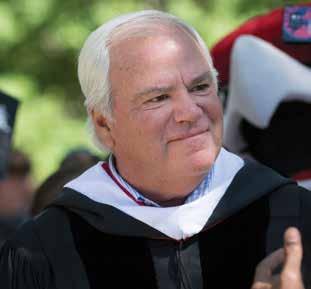


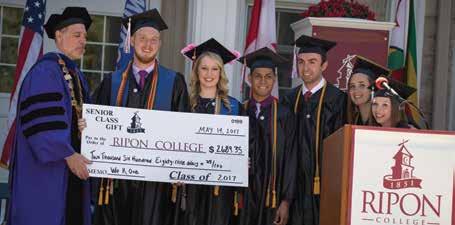



SUMMER 2017 | 7
President Zach Messitte
J.J. Grinde ’17
Ryan Jarreau
Junior Marshal Emma McDonald ’18
Stefano Viglietti
CRAIG CULVER
Senior Class Gift officers announce their total
Where are they Heading?
RACHEL STANLEY ’17 of West Allis, Wisconsin, will attend Marquette University’s Ph.D. program in clinical psychology on a full-ride Marquette University Graduate School Diversity Fellowship. She plans to conduct autism research and help develop treatments.

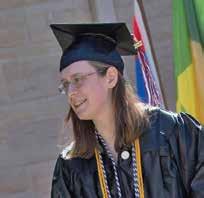

HALEA HOSKINS of Spring Grove, Illinois, will have a marketing internship with Beacon Business Group LLC in Milwaukee. She will build their new marketing and information database, and help with presentations for potential clients.
RANDAL SCROGGINS of Bellaire, Texas, will attend Rush University in Chicago to earn a master’s degree in nursing. He plans to be a traveling nurse for some time before continuing with his education. He received a scholarship for being part of a group that is underrepresented in the field of nursing.
ZACH SCHMIDT of Plainfield, Illinois, will pursue a master’s degree in counseling with specialization in sports psychology at Adler University in Chicago. He hopes to be a counselor for a sports organization.


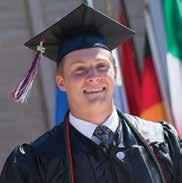
CECELIA WARD of Coldwater, Michigan, will attend American University in Washington, D.C., to pursue a master’s degree in global governance, politics and security from the School of International Service. She hopes to someday work at the State Department with a focus on the Middle East.
LINCOLN WURTZ of Ripon, Wisconsin, will be in the Medical Scientist Training Program (MSTP) at Mayo Clinic in Rochester, Minnesota, where he will pursue the dual M.D.-Ph.D. degrees. This is an eight-year program that includes full tuition and a living stipend. He plans eventually to split time between research and patient care in an academic hospital.
8 | RIPON College
CLASS OF 2017
HERE IS A SAMPLING OF PLANS FOR SOME OF OUR RECENT GRADUATES

JORDAN STIEDE of Seymour, Wisconsin, will attend Marquette University’s Ph.D. program in clinical psychology. He plans to become a clinical and sports psychologist, and a researcher in the field. He received a full scholarship as well as a stipend for living expenses.


EMMA BRONSON of Whitefish Bay, Wisconsin, will intern at Titus Talent Strategies in Milwaukee this summer, assisting their recruiting team. In September, she will study in the communication master’s program at the University of Westminster in London. In the future, she hopes to combine her love of traveling with recruiting.
NICOLE ZEMAN of Sussex, Wisconsin, will attend the University of St. Thomas Law School in Minneapolis, Minnesota, on a 90-percent Dean’s Scholarship. She is interested in a career in juvenile services, or just in helping others.

CORRIE OSBORNE of Mequon, Wisconsin, will attend law school at the University of Chicago. She received a partial scholarship. She will pick her direction after her first year of law school, “but I would love the chance to clerk for the Supreme Court at some point during my career.”

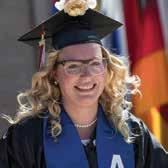
RYAN ADAMS of Cary, Illinois, will be an accounts receivable analyst for Uline. He plans to become a financial analyst.
SYDNEY RADANDT of Oshkosh, Wisconsin, will be a City Year AmeriCorps member in the inner city of the Milwaukee Public School System. She will support students in math and English to help them reach graduation and their goals. Afterward, she hopes to serve for two years as a PeaceCorps volunteer before working in administration for a large nonprofit organization.
SUMMER 2017 | 9
COSMIC WONDERMENT


10 | RIPON College
On Aug. 21, 2017, “The Great American Eclipse,” a total eclipse of the sun, will sweep across the continental United States and be visible from one coast to the other for the first time since 1918. This eclipse will not be visible from any other country, marking the first time a total solar eclipse will be exclusively visible in what is now the United States since the year 1257.
Everyone in the United States will see at least a partial eclipse, and the total solar eclipse will be visible along a 70-mile wide path beginning in Oregon, crossing 12 states, and ending at the Atlantic Ocean off the shore of South Carolina.
“A solar eclipse is a celestial event that makes us feel more connected to outer space and our solar system,” says Brett Barwick, a new associate professor of physics at Ripon College and the Harrison E. Farnsworth 1918 Chair in Physics. “It is an event that we physicists love to use to get children and the public excited about science and technology. This year, we are planning a public event to help show people how to construct their own safe solar eclipse viewing devices.”
Total solar eclipses occur somewhere on Earth every 18 months on average and last for only a few minutes in any one location. Eclipses happen because of a cosmic coincidence: as seen from Earth, the sun and the moon appear to be about the same size in the sky.
When the moon passes between the sun and Earth and the three line up perfectly, the sun appears partially obscured by the moon. The sun is just barely covered, with its corona — its outer atmosphere — visible as a shimmering halo of gold in a diamond ring effect around the darkened moon.

For those few minutes, daytime becomes a deep twilight, birds and animals are disoriented, roosters crow and insects chirp as they believe night has fallen. Stars and planets become visible in the darkened sky.
Because the sun’s corona usually is hidden from our view, a total eclipse allows solar astronomers the opportunity to collect data they normally cannot.
Ancient Myths
Many early myths were used to explain and react to eclipses:
MANY CULTURES: People banged pots, pans and drums to scare away demons causing the eclipse.
ITALY: flowers planted during a solar eclipse will be brighter and more colorful.
NAVAJO: An eclipse is part of nature and acknowledged with reflection, songs and fasting.
VIETNAM: A giant frog devours the sun.
VIKINGS: Sky wolves chase the sun or moon and cause an eclipse if they catch one.
ANCIENT CHINA: A celestial dragon devours the sun. The Chinese word for eclipse, chih or shih, means to eat. Predicting eclipses was important to protect the emperors. In 2134 B.C., two Chinese astrologers failed to predict the solar eclipse and were beheaded.
HINDUISM: Two demons, Rahu and Ketu, swallow the sun.
KOREA: Mythical fire dogs try to steal the sun.
TOGO AND BENIN: The sun and moon are fighting. To bring peace, people on Earth must settle their conflicts.
ANCIENT GREEKS: The gods are angry and warn of impending disaster and destruction.
INDIA: Food cooked during an eclipse will be poisoned.
INUIT: The Sun goddess Malina walked away after a fight with Moon god Anningan. A solar eclipse happened when Anningan caught up with his sister.
CHRISTOPHER COLUMBUS: He convinced Jamaicans an upcoming eclipse would demonstrate his power, and they should cooperate for the sun to return.
PREGNANCY: A solar eclipse can be harmful to pregnant women and unborn children, so they should stay indoors.
CRUCIFIXION: Some historians suggest an eclipse could have caused the darkened skies during the crucifixion of Jesus.
THREAT TO ROYALTY: Babylonians placed substitute kings on the throne during eclipses to protect the real rulers. Henry I died shortly after the eclipse in 1133.
SUMMER 2017 | 11

12 | RIPON College
Jeffrey Bantle ’80 is seated at the Missions Operations Directorate (MOD) console as he awaits the launch of the Space Shuttle Atlantis in Florida on Sept. 8, 2000.
OUTSTANDING ALUMNI
Photo courtesy of NASA
JEFFREY BANTLE ’80
MADE A CAREER OUT OF
Expanding our horizons
“Growing up in the ’50s and ’60s, when the space program was at a peak, made a huge impression on me and people in my generation,” says Jeffrey Bantle ’80. “I was also interested in science and math.”
At Ripon College, Bantle met Jeff Viken ’80. Jeff’s roommate, Al Klapmeier ’80, had his own aircraft company and a little airplane. “They often went out flying, and I went with them occasionally. That gave me a bug for flying,” Bantle says.
Bantle and Viken were roommates while pursuing master’s degrees in aerospace, aeronautical and astronautical engineering at George Washington University. They also did research at NASA Langley Research Center. While Viken remained in aeronautical research for his career at Langley, Bantle went into space flight at NASA in Houston, Texas, from 1982-2001. He was a flight director from 1990-2001, advancing to chief of the Flight Director Office for space shuttle systems in Mission Control for his last three years with NASA.

“It’s the best job I ever had,” Bantle says. “It was extremely rewarding. You start by planning a mission, executing the mission and having it be successful.”
A low point was serving during the Challenger explosion disaster in 1986.
“I lost colleagues and friends on board the space shuttle,” he says. “Most of us (at NASA) focused on the work after. There was lots of analysis to find out what happened. We spent a good year making improvements in safety and performance.”
Bantle directed 20 space shuttle missions out of the 98 launched at the time when he noticed the shuttle program was
winding down. He decided to explore positions in private industry and spent the next 16 years at Lockheed Martin, where he primarily worked with the Navy and Missile Defense Agency, supplying them with airborne and shipbased combat systems.
His numerous positions there included work in the helicopter programs and as vice president and general manager of Naval Combat and Missile Defense Systems. The company equips helicopters and ships with defense capabilities. For example, ships being deployed in South Korea to defend against potential threats from North Korea are equipped with Lockheed Martin combat systems. They also have supplied navies of several foreign counties with defense capabilities. Defense-equipped helicopters also are used for humanitarian deliveries around the world. “People don’t realize how much the Navy does in respect to that, and helicopters are key to these humanitarian missions,” Bantle says.
Bantle retired last year. “It was very rewarding to work on these kinds of problems — expanding our ability to reach into space as well as working with our military to protect our fleet, country and world,” he says.
While the types of jobs Bantle has had require strong science and math skills, “you need strong communication skills, too,” he says. “Having a broad liberal arts background like Ripon provides was significant in that and allowed me to excel. I always tell folks to get a broader background like the liberal arts. I think it does make a difference.”
SUMMER 2017 | 13
JEFFREY BANTLE ’80
SEVERAL ALUMNI OF A SINGLE CLASS AT RIPON ALL END UP AT NASA
Tom Horvath ’84 dreamed of being an astronaut when he was young, but his career instead has taken him into the inner workings of the space industry. Horvath has worked at NASA for more than 30 years as an aeronautical engineer. He was named American Institute of Aeronautics and Astronautics National Engineer of the Year for work done to better understand how the Space Shuttle Columbia was lost during re-entry in 2003.
He currently uses special aircraft equipped with special infrared cameras to look up and “image” a spacecraft as it re-enters the earth’s atmosphere. His team then can determine the actual temperature the spacecraft experiences during its flight back to earth.

“These temperatures can reach several thousands of degrees F, so the astronauts and hardware must be adequately protected to survive,” Horvath says. “An aerospace engineer must determine the ‘Goldilocks’ thickness of this thermal protection. Too thick and it’s too heavy and costly. Not enough, and the spacecraft and crew won’t survive. The temperatures we infer from the infrared observations help us validate complex predictive tools used for design.”
Horvath’s journey is tightly woven with relationships he forged through Ripon College. He recalls that journey here.

OUTSTANDING
ALUMNI
Horvath: A shared journey started at Ripon
Igraduated from a high school in Minneapolis in 1980. At the time, I was deeply disappointed that a failed eye exam had brought my ambition to become an astronaut to a screeching halt. So I was not sure what I was going to do for a career. At the end of my senior year at high school, I attended a college fair where a Ripon College representative was present. I was interested in a small school where I would not have classes with a large number of students, so I applied to a program where you could spend the weekend with an actual Ripon student on campus.
I stayed with a senior physics major named Jeff Viken ’80. It was a fantastic weekend. If I recall correctly, Jeff had a side business going on where they would make pizzas in their room and then sell them to others! As Jeff had graduated as I entered my freshman year at Ripon, I would not see him again for the next several years. Our paths would cross four years later as Jeff and I both ended up at NASA Langley Research Center in Hampton, Virginia.
From my first week at Ripon, Professor Dino Zei really took an interest in me. About a few weeks into my first physics class, I realized that I had not been exposed to some of the basic mathematical tools that would be required for class. … He eventually
spoke to the mathematics department head and made sure that I took the appropriate pre-calculus courses to allow me to keep up with the rest of the class.
Our class of 1984 started out with 10 students, I believe. By my sophomore year, our class was whittled down to four or five. I was especially close to Carolyn Jordon ’84 and Zia-ur Rahman ’84. The three of us seemed to click together and helped each other out with homework assignments.
I met Larry Huebner ’83 at Ripon. Larry was in the physics class ahead of me. Like our class of 1984 group, I recall their class having a similar level of camaraderie and relationships with the physics professors. As Larry was one year ahead, he was usually willing to give me tips as an exam approached.
Larry was in a fraternity with Bret Jaeger ’84. Both Bret and Larry would both impact my life significantly. After his graduation from Ripon, Larry went to work at NASA Langley in Virginia, and I temporarily lost contact with him. A year later, Bret (a history major) and I both graduated from Ripon. That fall, I was set to start studies at the University of Minnesota as a graduate student in their aeronautics department. Bret called me up several weeks from the

SUMMER 2017 | 15
Jeff Viken ’80 and Tom Horvath ’84 look at a scaled model of the space shuttle with the color-infrared image imprinted on its surface. Behind them, a computer screen displays a color-infrared image of the space shuttle Discovery as it returned to NASA Kennedy Space Center in 2009. Warmer areas are where the surface temperature is hot. “It’s all relative, though,” Horvath says. “The temperature of the bottom surface of the shuttle at the time the infrared picture was snapped was ~1500 degrees F when it was flying by more than eight times the speed of a bullet.”
Photo courtesy of Tom Horvath
start of classes to see if I wanted to take one last road trip — out east to visit Larry and NASA. I couldn’t refuse.
While on the East Coast and visiting Virginia Beach, Larry ‘suggested’ that I interview for an internship at NASA where he worked. I was NOT prepared for an interview. Shorts and T-shirts were all I had packed in my suitcase. Nevertheless, Larry set up the interview with the department chair at NASA. It actually went well. However, when asked if I had a letter of reference, I had to admit that I had not come prepared. I told the NASA department chair that all I had with me was Professor Zei’s phone number. He called Dino right there on the spot! I never spoke to Dino about the call, but I guess he provided a good verbal recommendation. I’ve been here at NASA since the fall of 1984.
Larry has since transferred to NASA Marshall Space Flight Center (MSFC) in Huntsville, Alabama, but I usually see him several times a year. I often call Larry to discuss some aspect of my work that might involve engineering that is performed at MSFC.
I usually hear from Bret and Larry when the Vikings and Packers play against each other. Carolyn dropped off my radar for years after graduation. Then one day, I see her at the NASA cafeteria! Turns out she periodically works as a NASA contractor and comes to NASA Langley where she assembles and calibrates her science instruments. Jeff Viken is still here at NASA Langley, as well, and our paths cross many times.
It was always a dream of mine to be an astronaut. Life threw me a couple of curveballs, but working at NASA has been the next best
thing. I get to work on spacecraft that go into space and then return back to earth. The relationships that began at Ripon helped get me to where I am today, and some of the relationships continue to influence my work.
Funny story: Back in 2014, I was at NASA Johnson Space Center just after the successful launch and test flight of a capsule that is intended to replace the Space Shuttle. A large group of engineers and support personnel had been invited to a celebration party. I started a conversation with a stranger. Based upon his accent, I quickly placed him from somewhere in the Midwest. He soon started talking about the Green Bay Packers, so I narrowed it down to somewhere in Wisconsin. His voice sounded oddly somewhat familiar, but I couldn’t quite place it. After about 10 more minutes, he mentioned his brother also worked at NASA. A lightbulb went off. I quickly asked if he had gone to Ripon College. He responded yes — and added ‘how did you know?’ Turns out he was Larry Huebner’s brother, Bill ’80. I had never met Bill, but his voice and passion for the Packers gave him away.
Certainly all the math and physics coursework at Ripon College provided me with the tools I would need to successfully perform my engineering work at NASA. But I have to admit, that wasn’t the most important aspect of how Ripon would shape my career and life in general. My experience at Ripon College first and foremost taught me to believe in myself — even through difficult times. The challenges I faced trying to catch up academically in my freshman year at Ripon seemed, at least for a while, insurmountable. But I didn’t give up. I surrounded myself with people who took the time to help me.

16 | RIPON College
“IT WAS ALWAYS A DREAM OF MINE TO BE AN ASTRONAUT. LIFE THREW ME A COUPLE OF CURVEBALLS, BUT WORKING AT NASA HAS BEEN THE NEXT BEST THING. I GET TO WORK ON SPACECRAFT THAT GO INTO SPACE AND THEN RETURN BACK TO EARTH. THE RELATIONSHIPS THAT BEGAN AT RIPON HELPED GET ME TO WHERE I AM TODAY, AND SOME OF THE RELATIONSHIPS CONTINUE TO INFLUENCE MY WORK.”
OUTSTANDING ALUMNI
tom horvath ’84
Carolyn Jordan ’84 is an atmospheric scientist with the National Institute of Aerospace, working primarily on aerosol research at NASA Langley Research Center. “For me, scientific research is fascinating. The older I get, the more I appreciate how much we don’t know about the world and the universe in general. I get to spend my days working on understanding those things we don’t know. To the extent I can, I get to help answer those questions which is really exciting and fun. I love what I do. I wouldn’t want to be doing anything else.”

Lawrence Huebner ’83 has been working for NASA more than 27 years, 14 at NASA Langley and the last 13 at the Marshall Space Flight Center in Huntsville, Alabama. He most recently has worked on “a variety of projects related to the advancement of space technologies in areas ranging from small-launch vehicle design to new methodologies for manufacturing and assembling very large space structures in orbit. … The reward is truly in the efforts of fellow colleagues at NASA, other governmental organizations, industry and academia to make the impossible (or more accurately the ‘really hard’) possible.”
William Huebner ’80

has served in numerous roles for NASA. He currently is the flight operations directorate lead for nominal flight software and automated fault management software development. This supports the Environmental Control and Life Support Systems of the new Orion spacecraft.


“Reaching forward to do things not yet done and to discover things not yet known is an intrinsic characteristic of being human. Doing so with potential benefit to humankind helps justify the effort and cost of such endeavor. To me, crewed exploration of the solar system — with the associated risks and costs — pushes us, as a people, to be our very best, and it affords us unique opportunities to make new discoveries that can benefit all.”
DINO ZEI LEFT A LASTING LEGACY
Former Professor of Physics Dino Zei inspired countless students during his 35-year career at Ripon College. He served at Ripon from 19571992 and died in 2010 at his home in Ripon.

He taught physics at St. Cloud State College, Milton College, Beloit College and the University of Wisconsin. At Ripon College, he served as chair of the department and the William Harley Barber Distinguished Professor of Physics. He did extensive research at Argonne National Laboratory, the Bureau of Standards, High Altitude Laboratory, Oak Ridge National Laboratory and NASA in Houston, Texas.
He also consulted for Giddings and Lewis and other companies.
He was married to Joan Archambault Zei ’64, who died in 2015.
SUMMER 2017 | 17
Launching into new career focus

18 | RIPON College OUTSTANDING ALUMNI
Jennifer White ’03 on the roof of the NOAA Satellite Operations Facility
As an engineer at the NASA Goddard Space Flight Center and the National Oceanic and Atmospheric Administration (NOAA) Satellite Operations Facility in Maryland, Jennifer White ’03 has been working as a satellite simulator operations engineer for three years. She uses two flight simulators, the Flight Vehicle Simulator (FVS) and the Flight Vehicle Test Suite (FVTS).
“The entire time I’ve been working with the simulators, I would rather have been on the other side,” she says. And now her wish is coming true with a series of planned satellite launches.
White was a physics and mathematics major at Ripon and earned a master’s degree in physics from Ohio State University. But she became disconnected from her chosen field after graduate school. For several years, she taught and worked in non-physics-related jobs.
This left her in an awkward position — most employers were looking for someone either fresh out of college or someone with experience. White fit neither category. But thanks to a connection she forged during her time at Ripon, White found her current job.
“Networking and a great attitude are what helped me get to where I am today,” she says. “I 100-percent know that going to Ripon College helped with that.” At Ripon, White participated in the internship program NASA Academy. She got into the program because of recommendations written by her professors at Ripon. Completing the program allowed White to join the NASA Academy Alumni Association.
“During the summer of 2014, I got an email from another member, whom I met at the NASA Academy, advertising an opening on her team. I contacted her for more information, and she put in a good word for me,” White says. “I had no previous experience, but with her recommendation and my liberal arts background, I got the job.”
The FVS simulator on which White works allows NOAA to plan maneuvers for its weather satellite before executing them. These maneuvers involve an average of two annual burns to keep the spacecraft in the correct orbit, monthly rolls which allow an instrument to use the moon for calibration, and aversion maneuvers to avoid debris. Her work involves mostly programming and computer science.
Currently, the only active satellite is S-NPP, but NOAA is planning to launch a series of satellites, collectively called JPSS, in upcoming years. The first in the JPSS series, J1, is set to be launched in late September
2017. S-NPP will continue to orbit with J1 until J2 is prepared to replace it. With more satellites orbiting at once, NOAA will be able to collect more accurate climate data. If everything goes according to plan, there will be multiple satellites in the air, which means more people will be needed to coordinate them.
White is training to be one of those people, called an orbit analyst. Instead of setting up the simulator, she now will be planning that maneuver. “It has been drastically more interesting,” she says. “You learn what’s happening instead of just dealing with software issues. To be on the other side and actually doing the maneuvers on the spacecraft is way more exciting.”
Although this new position requires a lot of learning, White is not daunted. “Currently I’m enjoying the learning process,” she says. “One of the most valuable things I learned at Ripon College was how to learn. I majored in physics and math and then went on to get a master’s degree in physics, but I’m doing the job of an aerospace engineer. I feel like the liberal arts background helps me be more flexible and able to think outside the box. I’m looking forward to being able to take those skills and use them to work on projects to help make our maneuver planning more efficient.”
MEGAN SOHR ’18
Oshkosh, Wisconsin
SUMMER 2017 | 19

20 | RIPON College
Spencer Reisbick ’14 works toward the future.
Spencer Reisbick ’14 is a Ph.D. student in chemical physics at the University of Minnesota. He works on electronic device materials so small that they cannot be seen by most microscopes.
“We are able to look at heat moving through the materials at time frames 1 billion times faster than a second,” Reisbick says. His research group is interested in revealing the temporal domain of non-equilibrium processes such as heat dissipation, phase transitions and material relaxations. These events occur much faster than normal imaging techniques, such as cameras, can observe.

“(We use) an instrument known as Ultrafast Electron Microscopy (UEM), which allows us to directly visualize what happens in nano-sized materials at ultrafast time scales,” he says. “I am currently researching electronic materials which can have applications in the future in the device industry such as completely efficient conductance and phase state memory. I hope
to eventually work in industry analyzing electronic components before they enter the device application stage.”
He says the ability to develop a fundamental understanding of simple processes such as heat transfer and light propagation are vital in everyday applications such as electronics. “Being able to further the development of these applications requires a solid base understanding of physical phenomena, and I find enjoyment in working on difficult problems which assist in revealing the unknowns which we are still unable to control,” he says.
“My liberal arts education has been vital in developing a variety of talents which are required to be successful as a scientist,” Reisbick says. “At Ripon, I was offered leadership opportunities as well as courses outside of my skill set which pushed me to problem-solve in ways I otherwise wouldn’t have had. Ripon prepared me extremely well for my journey in graduate school because I was forced to collaborate with many different viewpoints, past experiences and backgrounds. The diverse culture at Ripon encouraged me to join organizations which provided interactions with potential business leaders, lawyers and coaches who pushed me to find alternative problemsolving techniques.”
SUMMER 2017 | 21
Physics studies will lead Spencer Reisbick ’14 to assist in industries of the future
Faster than a speeding bullet times about a zillion.
Space and the universe: firing our imaginations
Famous naturalist John Muir, who spent many of his younger years in Wisconsin, once observed the interconnectedness of the natural world: “When we try to pick out anything by itself, we find it hitched to everything else in the Universe.”
The beauty of the universe and the excitement of the U.S. space program have generated many memories for all of us. We asked alumni two questions:

1. Do you remember when man first walked on the moon? The Challenger exploded? You witnessed an eclipse or comet? You first saw “the man in the moon?” What is your most memorable spacerelated event?
2. Would you take a space flight in the future? If so, who would you take with you into space?
Here are some of the responses we received.
22 | RIPON College
Yes, I would definitely travel into outer space. My husband and I are both fascinated by space, so I would bring him along for the experience.
Jessica Rosen Lively ’02 Chula Vista, California
I would take a trip into outer space. I would take my son. This would make him the first person with Down syndrome to be in outer space. I would want to take the flight on March 21. March 21 is World Down Syndrome Awareness Day. It is held on this date because the date 3-21 stands for 3 21st chromosomes.
I remember during the televised portion of the first manned shuttle launch, April 1981, they showed a side-byside comparison between a replay of the shuttle launch and the launch of an Apollo craft. The shuttle was well on its way before the Apollo craft had even cleared its launch tower.
 Joan-Marie Zech Gerth ’79 Oak Harbor, Washington
Joan-Marie Zech Gerth ’79 Oak Harbor, Washington
I had a cool experience back in the ’90s sometime seeing the space shuttle take off. Mike Vassallo ’72 (now deceased) and I played on the Ripon College golf team together in the spring of ’72, and we remained close friends thereafter. We lived near the Chicago area and by February each year we were getting cabin fever, so we started an annual trip to Florida to play golf with a couple other friends from the area. We went down about 10 years in a row.
I was in France on a high school trip between junior and senior years in high school. It was 1969. Neil Armstrong walked on the moon, and I put a little American flag up in my room using a bar of soap as the flag stand. The French headlines were full of American stories that summer. One was the moon landing, and the other was Teddy Kennedy driving off a bridge.
Susan Vonder Heide ’74 Chicago, Illinois
Flat on my back in the cemetery watching the stars!
I was just being released from active duty in the U.S. Navy and was staying in the international service accommodations in Naples, Italy. One afternoon, a group of people from a variety of nations and military services were gathered around a television in a lounge in the compound, watching as American astronauts descended from their craft to take their “giant step for mankind.” It was a bonding and emotional moment for all of us gathered there, representing not our countries of origin or branches of the service, but our pride as fellow earthlings watching one of our own step successfully into the hitherto unknown in search of answers about our connections to our greater universe.
Bob Blair ’66 Berlin, Massachusetts
On the first day of the trip, we would fly down to Orlando and play a course later in the day as sort of a warmup to the rounds that would follow in the next four or five days. By the time we would finish 18 holes, it was dusk.
One year, we are coming down the 18th hole and it’s getting dark, and off to the north-east we see the space shuttle taking off. We all stopped in our tracks and just stood and watched as the big orange ball of flame rose majestically into the sky and after a few minutes just disappeared into the higher altitudes.
It was a sight I will never forget as it was just coincidence that we saw it at all. If it had occurred a few moments later we might have been in the clubhouse having a beer, or a few moments earlier we would have been facing the other direction on the 17th hole and missed it.
Jim Hintz ’72 Salem, South Carolina
I remember having to go to a different classroom to watch the Alan Shepard and John Glenn launches. When I was in high school, we’d finally gotten a (B/W) TV, so I got to see Armstrong and Aldrin from the comfort of my living room.
But the incident that made the biggest impact on me was the Challenger disaster. My oldest brother is a teacher. He was one of 10 finalists for the Teacher in Space launch. So he’d worked and trained with Christa McAuliffe, et al., for months. So when I heard the news of the explosion, I was devastated for those killed, those directly involved, and for my brother who’d just lost close friends, yet also relieved that he’d not been chosen.
It’s very confusing, being devastated AND relieved at the same time! I will never forget the emotions of that day, or the feeling in the pit of my stomach.
William Metcalf ’75 Lowell, Massachusetts
Dana Smith McGillen ’88 Shelby Township, Michigan
Mary LeFevre Chavez ’68 Charlevoix, Michigan
SUMMER 2017 | 23
We first landed on the moon the summer after my freshmen year at Ripon. I was working as a waitress that summer and so clearly remember walking out after work that night, standing still for a long time just staring at that beautiful, full moon on an unbelievably clear Chicago evening. I was awed at knowing that there were men on the moon. It seemed at that moment that the world truly was changing.
Two summers later, Sue Mjanovich Key ’72 and I were on the last weeks of a summer spent in Europe. We had bought bikes in Edinburgh with the intent of biking back to London for our flight home. On the first night, we stayed at a rural B & B in the Scottish countryside. The innkeepers were so excited about the American moon landing that was about to take place. Unlike my experience with the first moon landing, neither Sue nor I had any idea that America was once again landing on the moon. Had we, like many Americans, grown so nonchalant about this amazing scientific achievement or were we just travelers that were out of touch with world events?
Karen Teschner Dorn ’72 Arlington Heights, Illinois
In the early ’70s, the northern lights appeared on a few occasions. I recall some students making them a viewing experience.
Dave Bunten ’73 Lake Zurich, Illinois
I was a first lieutenant, U.S. Army, stationed in South Korea in 1969. Early in the morning, 5-6 a.m., July 21 (South Korea is a day ahead of the United States), I received a phone call from the duty officer, 1st Brigade, 7th Division, requesting that I report to brigade headquarters as soon as possible. My position was company commander, Headquarters and Headquarters Company, 1st Brigade. As we were always on alert for possible activity on the DMZ, I got there in about 15 minutes.
Upon arrival, I was greeted by the brigade commander and his staff. All of the junior officers were there or arrived shortly. We were all requested to move to the “mess” (dining) hall/staff meeting room to wait for the brigade commander. We were called to attention upon his arrival. He commanded us to be “at ease” and requested that the Korean bartender come in and pour the champagne. Once that was completed, he asked us to raise our glasses and he proposed a toast to the United States of America, followed by an announcement that the United States space program was preparing to land a spacecraft on the moon. Many of us were not aware that a spacecraft was launched earlier in the day.
After the toasts, he dismissed us and announced the bar was open and the TV was on for us to watch the landing and the following events. Needless to say, many of us stayed in the bar for the remainder of the telecast!
Richard Kuehl ’67 Carbondale, Illinois
Being in the aerospace industry, I was very interested in space-related activity. My cousin, who was stationed at Patrick AFB, Florida, was able to get VIP seats for a night space shuttle launch from Kennedy Space Center. I took my youngest son to witness the launch.
 John Pickerel ’68 Mesa, Arizona
John Pickerel ’68 Mesa, Arizona
The first walk on the moon by Neil Armstrong was amazing. Stayed up late. The Challenger exploding was very sad. Was at a business client’s catching the take of the first teacher into space, McAuliffe, and watching it explode — shocking!
John Hyde ’65 Pensacola, Florida
My most memorable space event has to be “man walking on the moon” in July 1969. All eyes were glued to the TV in the wee hours of the morning. The telecast was so spectacular and unbelievable. It was heart-palpitating.
Suzie Shade ’63 Chicago, Illinois
My wife, Donna Ross, was then the president and chief executive officer of the Florida Attractions Association. One of her member organizations was the Astronaut Hall of Fame. John Glenn, when he was a senator, took a flight in space, and when he got back all of the living astronauts had a dinner for him. My wife was invited, and I got to go along. They had a receiving line, and I got to shake hands with the astronauts, including Neil Armstrong. The highlight of the evening was I got to spend 20 minutes talking with Walter Cronkite. That was a big deal.
Lockwood ’65 Sylva, North Carolina
In the spring of 1961, I was finishing up my freshman year at Ripon. One April evening, hours past midnight, I was alone in the basement of Shaler Hall typing up a long paper due the next day, my radio on to keep me awake. When the news came on, I learned for the first time that the Russians had just launched a man, Yuri Gagarin, into space. I was quite moved to think that a man was all alone up there, facing dangers never before confronted, perhaps thinking he might possibly be lost in space forever. It didn’t matter a bit that he was Russian; he was human.
Marjorie George Williams ’64 Ocean Springs, Mississippi
ALUMNI PERSPECTIVES
Frank
24 | RIPON College
I have two most memorable:
1) The first moon landing in July 1969, of course. “One small step for a man ...”
2) The Challenger explosion.
I was living in New Orleans at the time, working in my turn-key business at an apartment complex with the radio on. A maintenance supervisor was in the same apartment with me doing one of his repairs as I cleaned a carpet. Anyway, the announcer broke into the broadcast with the news of the explosion.
I remember the feeling of devastation and sadness for the astronauts.
What’s even more poignant is that the O-ring manufacturer that made the failed O-rings that caused the explosion was about a mile away, and I passed it every time I went there at the apartment complex.
So, that was kind of spooky to me, thinking I was that close to something that caused such an awful accident.
That is something I will not and cannot forget.
Overall, the space program was such an inspiration to me growing up, as my great-grandfather and grandfather were both engineers and owned their own construction company in Chicago. The technical aspect of that business led to my later career in the industrial products and service industry.

So, the space program is memorable and inspirational in many ways.
Little did I know that I would be using O-rings in valves for refineries, power plants, chemical plants, food plants, etc. — one day.
I saw all types of materials used for O-rings in different applications. I even witnessed the creation of new materials in the industry, from the two basic types of rubber used at home, cars, etc.; to Teflon, viton, kel-rez, kel-f, etc., depending on the application.
It was all fascinating to me, and I wondered at times, maybe those astronauts could have
been saved with some of the material in the O-rings we were using in the above places. It was something that motivated me to prevent disasters in the valve business such as Three Mile Island and Chernobyl (nuclear accidents). We never had an accident during my time at those companies, and I was often recommending and choosing what material of O-rings to use to my mechanics in the shop. So, I took great care and went to seminars at manufacturers and trade shows to keep current with the newest technologies and materials for O-rings.
It all started with inspiration from the space ventures and my grandfather’s construction business.
The space program really made me think about all the applications in life where the technology applied.
Mike Tollifson ’82 Shepherdstown, West Virginia
My memories of Apollo 11 are both vivid and personal. My wife, Donna, and I were working for Simmonds Precision Products in Vergennes, Vermont, in 1969, and were privileged to take part in the design and execution of the fuel-gauging equipment used in the Apollo 11 spacecraft. We were both awestruck and humbled to listen to the radio broadcast of the landing, knowing that we were a part of its success.
Simmonds had the Apollo Creed posted on its bulletin boards while we were there. It went as such:
“I assemble Apollo ... I am proud ... I am the best in a nation of craftsmen ... into my hands is entrusted the lives of men ... and the pride of my country.
“Through my veins flows the blood of a hundred generations of artisans ... that built the Viking ships and the Santa Maria ... that hammered cold steel and the towering forests into wagons which crossed a continent ... that laid the keel of Old Ironsides and cast the cannons of Fort Defiance ...
“I will honor my heritage.
“Because of me, our generation will reach to the stars.
“My place in the history of man is assured.” I wonder if there are any other Ripon grads who were intimately involved with Apollo 11?
Mike Bouchette ’68 Sherwood, Wisconsin
SUMMER 2017 | 25

A perspective of the solar system from our own backyard
26 | RIPON College
CERESCO PRAIRIE
During different times of the year, many of the planets in our solar system are visible to the naked eye. Mars is red, Jupiter and Saturn are yellow, Mercury and Venus stick close to the western horizon right around sunset or the eastern horizon near sunrise.
The planets and other objects in the solar system are celebrated in a Planet Walk constructed along a flat, one-half mile path in the Ceresco Prairie Conservancy.



Students in Associate Professor of Art Mollie Oblinger’s Ceramics II course learned about the solar system from former Assistant Professor of Physics Leah Simon and her astronomy students, and then produced clay domes that mark locations on the walk. Each of these personal interpretations of a planet or moon is approximately 17 inches in diameter.
Astronomy students learned about different types of scale models to represent the solar system and developed their own models in which both the planet diameters and distances between planets were scaled down to comprehensible sizes.
Working in small groups, they created the website ripon.edu/planetwalk, with detailed information about each of the planets, moons and other solar system bodies represented on the Planet Walk. Each stop along the walk has its own link with fun facts and ways to visualize the immense sizes and scales represented by the planet walk.
The planetary bodies are placed along scaled-down distances they would be if the solar system were only one-half mile from the sun to Pluto. But they are not done to scaled size. If they were:
• The sun would be the size of a cantaloupe
• The Earth the size of a pinhead
• Jupiter the size of an acorn
If this scale model of the solar system were extended to the nearest star, Proxima Centauri, the model star would be located all the way in Quito, Ecuador!
|
FOR SOCCER STANDOUT CAMERON GREENE ’17, LIFE IS ALL ABOUT


28 | RIPON College
Inspired by a friend, Cameron Greene ’17 became involved with Be the Match, a program that provides bone marrow transplants across the United States to help patients with leukemia, aplastic anemia and other diseases. Just six months after joining the program, Greene was identified as a potential match last summer, and he underwent a procedure to donate bone marrow three weeks before he was scheduled to report to Ripon’s campus for preseason soccer practices.
“Growing up, my parents instilled the idea of paying it forward, and that’s exactly how I saw this opportunity,” Greene says. “It was a chance to give a young adult a shot at a better life with little to no harm done to myself.”
The procedure lasted just more than an hour and consisted of doctors taking a quart of marrow from around the pelvis. Because donations are confidential for one year after the donation, Greene still does not know who his recipient is.
“When the one-year waiting period is over this summer, I’m looking forward to finding out who received my donation,” Greene says. “The whole process definitely gave me a different perspective on life because this procedure gives the recipient another chance at a life that most people consider normal.”
Greene was able to leave the hospital under his own power about three hours after the

operation, but there still was a recovery time of a week or two to regenerate bone marrow in his body. Less than one month after the operation, Greene was back on the soccer field, playing the game he loves, for Ripon’s first practices of the 2016 season.

As one of the most consistent performers for the Red Hawks during the last four years, Greene played in all 71 games during his career, starting all but three contests. He finished either first or second on the team in goals scored during all four years, and left his mark on the program by ranking seventh in school history for career assists.
“Looking back on my career, it’s pretty cool to have been such a big part of the program,” Greene says. “It’s a huge honor and privilege to have my name in the record book next to the great players who have come before me, such as Alvaro Calle ’13 and Coach (Zach) Hershoff ’11.”
In addition to his 10 career assists, Greene also finished with 14 career goals and
38 total points. But even more than the statistics that he accumulated, Greene’s best and most vivid memories will be that of his teammates.
“The last four years were some of the greatest years of my life,” Greene says. “Through all the ups and downs, my team was always there and we always had fun. Soccer at Ripon College will always be something that I remember, and I thank Coach Hershoff for everything he has done and is doing for the program.”
An exercise science major from Two Rivers, Wisconsin, Greene plans to attend graduate school at Franklin College in Indiana to pursue a master’s degree in athletic training.
MIKE WESTEMEIER DIRECTOR OF ATHLETIC COMMUNICATION
SUMMER 2017 | 29
“GROWING UP, MY PARENTS INSTILLED THE IDEA OF PAYING IT FORWARD, AND THAT’S EXACTLY HOW I SAW THIS OPPORTUNITY.”
Welcome to new faculty members for fall of 2017

BRETT E. BARWICK , associate professor of physics and the Harrison E. Farnsworth 1918 Chair in Physics. Most recently, he was an associate professor at Trinity College, Hartford, Connecticut.
He received his bachelor’s degree from Doane University; and his master’s and Ph.D. from the University of Nebraska-Lincoln.
NICHOLAS J. EASTMAN, assistant professor of educational studies. Most recently, he was an instructor at Georgia State University in Atlanta. He received his bachelor’s and master’s degree from Southern Illinois University; and his Ph.D. from Georgia State University.

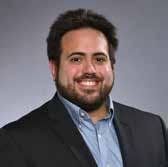
TOMER HAMAMI, assistant professor of business management. Most recently, Hamami was a teaching assistant in the Kellogg School of Management, Northwestern University, Evanston, Illinois. He received bachelor’s degrees from the University of Maryland; his master’s degree from Temple University; and his Ph.D. from Northwestern University.

30 | RIPON College
MATTHEW DAVID KNOESTER , associate professor of educational studies. Most recently, he was an associate professor at the University of Evansville, Evansville, Indiana. He received a bachelor’s degree from St. Olaf College; his Ed.M. from Harvard University; and his Ph.D. from the University of Wisconsin-Madison.
JASON R. CARBAUGH , visiting professor of biology. Most recently, he was a biology instructor at Blinn College, Brenham, Texas. He received a bachelor’s degree from Indiana University-Purdue; a master’s of natural sciences from Southeast Missouri State University; and a Ph.D. from Texas A&M University.
FAN ZHANG , assistant professor of business management. Most recently, Zhang was an instructor at West Virginia University, Morgantown, West Virginia. Zhang received a bachelor’s degree from Shandong University, China; and M.S., M.A., M.B.A. and Ph.D. degrees from West Virginia University.

ANTON A. BOBKOV , visiting instructor of mathematical sciences. Most recently, he was an instructor at the University of California-Los Angeles. He received a bachelor’s degree and Ph.D. from the University of California-Los Angeles.
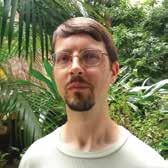

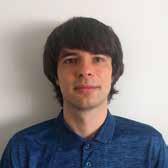
JULIA E. MANOR, assistant professor of psychology. Most recently, she was a visiting assistant professor at Macalester College, St. Paul, Minnesota. She received a bachelor’s degree from Macalester College; and her Ph.D. from the University of Minnesota-Minneapolis.

REFER A STUDENT TO
Do you know a young person who would enjoy and benefit from Ripon College’s rigorous arts and sciences cirrculum and the active residential campus experience?
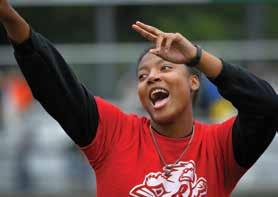
or
the
of
at 1-800-947-4766
Referring a student to Ripon is easy. Fill out the online form at ripon.edu/refer-student;
call
Office
Admission
RIPON! SUMMER 2017 | 31
AROUND THE CLOCKTOWER
1. Ripon
first in nation for graduation rate for students of color
Ripon College is ranked number one in the nation on the Power 150 Index, an identification of Best Colleges for Students of Color by Alliance College-Ready Public Schools. More than two-thirds of public colleges and universities have increased graduation rates over the last decade, but the graduation gap grew by 19 percent between white students and underrepresented minorities, the Alliance says. To aid in college selection, the Alliance identified 150 colleges with the highest minority graduation rates of 75 percent or higher among the 4,200 U.S. colleges and universities.
Photo: James-Mark Ooko-Ombaka ’16 of Mount Vernon, New York, celebrates graduation with his family from Nairobi, Kenya.
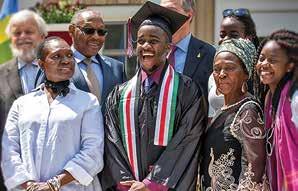
3. Justin Niebank ’78 scores another
CMA Award
Justin Neibank ’78 of Franklin, Tennessee, won a 2016 CMA Award from the Country Music Association as mix engineer for Thomas Rhett’s “Die a Happy Man,” the Single of the Year. The ceremony was held Nov. 2, 2016. His many previous honors include five Country Music Awards, three Grammy Awards and involvement with more than 20 Grammy Award-winning records as a producer, engineer or mixer.

He is shown second from right in the photo.
basketball team wins MWC tournament title; women’s team qualifies
4. Men’s
2. Mary Unger,
assistant professor of English, awarded NEH research grant
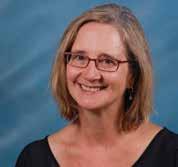

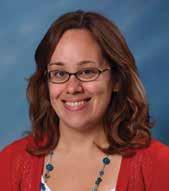
Mary I. Unger, assistant professor of English and managing editor of Legacy: A Journal of American Women Writers, has been awarded a grant from the National Endowment for the Humanities (NEH) to conduct research this summer. The Summer Stipends award will support Unger’s project, “Cultures of Reading in the Black Chicago Renaissance,” examining a forgotten book culture on Chicago’s South Side from 1930-1950.
The men’s basketball team ended a 15-year tournament championship drought by defeating Lake Forest College 81-72 to win the 2017 Midwest Conference Tournament championship Feb. 25. The win gave the Red Hawks a berth in the NCAA Division III tournament for the first time since 2002 and for the 13th time in program history. Despite a loss to ninth-ranked Washington University in the first round, Ripon recorded its first 20-win season since 1999. Seniors Ty Sabin and Brendan McCoy were all-conference selections, and Sabin earned all-American honors from D3hoops.com and the National Association of Basketball Coaches.

The women’s basketball team qualified for the MWC Tournament, one of only four teams in the conference to do so.
5.
Mahler Kraaz awarded contract to edit new book
Sarah Mahler Kraaz, professor of music and college organist, has received a contract from Routledge (Taylor and Francis group) to edit a volume, Music and War in the United States Seventeen scholars from the United States and Canada each will write a chapter on music in the military and domestic music during conflicts in which the United States has been involved. The book is intended as a textbook for courses in music and war, military history, and general readership. Editing manuscripts and writing an introduction to the book will be the focus of a sabbatical leave Mahler Kraaz will hold in the spring of 2018.
She has developed and taught a Music and War course twice at Ripon College.
6.
Rachel Stanley ’17 wins Nick Adams Short Story Prize
Rachel Stanley ’17 won the Associated Colleges of the Midwest’s 2017 Nick Adams Short Story Prize for her original work, “ Four Times Jasper Diallo Didn’t Die (and One Time He Lived).”
New York Times best-selling author Karen Abbott was the judge for the contest.
Stanley is the first Ripon College student to win the Nick Adams Contest, which has been held annually since 1973. She will begin a doctoral program in clinical psychology at Marquette University, where she plans to continue research she has been pursuing as an undergraduate on issues of autism identity and stigma.
32 | RIPON College
Sarah
1 2 4 6 5 3
7. Ripon College ranked No. 2 in state by College Choice
Ripon College has been ranked No. 2 of the 25 best colleges in Wisconsin by College Choice. The organization based its rankings on academic quality and return on investment.
College Choice cited Ripon College for its top rankings from other organizations; its more than 40 undergraduate programs and other pre-professional programs and self-designed majors; undergraduate research; online coursework; and the new Catalyst curriculum.

8. Ripon players participate in state honor band
Four Ripon College students took part in the National Band Association-Wisconsin Chapter Intercollegiate Honor Band on Jan. 19-20, 2017, in Appleton, Wisconsin. They are: Cris Magana ’19 of Lake Geneva, Wisconsin, baritone saxophone; Lillian Lenk ’18 of Amery, Wisconsin, clarinet; Mitchell Eithun ’17 of New London, Wisconsin, clarinet; and Eric Westberg ’20 of North Mankato, Minnesota, trombone.
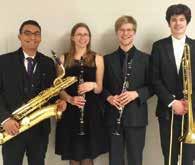
9. Alumni, students earn National Science Foundation honors
David Garcia ’14 and Raymond Allen ’15 have been awarded 2017 National Science Foundation Graduate Fellowships.

Garcia is from West Chicago, Illinois. At Ripon, he majored in history and chemistry and minored in economics. He now is studying at the University of Tennessee-Knoxville.
Allen is from Lac du Flambeau, Wisconsin. At Ripon, he majored in chemistry-biology and minored in Latin. He now is studying at Duke University.

Winning honorable mentions were: Emily Cliff ’17 of Mukwonago, Wisconsin, a chemistry major and biology minor; and Robert Enright ’17 of Stevens Point, Wisconsin, a chemistry major with minors in Spanish and physics.
10. Scene from Ripon College’s fall play accepted for special presentation

A scene from “Waiting for Godot,” the fall theatre production at Ripon College, was selected for presentation at the Kennedy Center American College Theatre Festival, Region 3, in Indianapolis. Although copyright issues prevented the scene from being given, “the presentation of scene is the highest honor an associate production can receive,” says Robert Amsden, professor of theatre and the director of the production.
11. Rachel Steiner ’17 wins state Student Activist Award for peace, justice issues

Rachel Steiner ’17 of Oshkosh, Wisconsin, received a 2017 Student Activist Award from the Wisconsin Institute for Peace and Conflict Studies. The award is made annually to “Wisconsin college or university students who have made an outstanding contribution to activism related to peace and justice issues.”
Steiner was selected for her organizational leadership in the organizations Ripon College Disability Rights, Education and Activism Movement (DREAM), Ripon College Feminists, Ripon College Diversity Coalition, and Queer Straight Alliance of Ripon College.

12. Fire pit added to Ripon College amenities
Thanks to a $1,000 grant from President Zach Messitte’s “Twenty for ’17” campus improvement initiative, the College now has a permanent fire pit located outside Harwood Memorial Union. Students “christened” the new campus amenity by roasting marshmallows and making s’mores March 23.

SUMMER 2017 | 33
11 8 9 10 12 7
AROUND THE CLOCKTOWER
13. Rebecca Matzke gives talk about World War I
Rebecca Matzke, associate professor of history and associate dean for faculty development, gave a talk, “World War I: The War that Shaped a Century” at the Oshkosh Public Library in April. The talk was part of the Oshkosh World War I Centennial Commemoration.

14. Three seniors honored for work in visual arts
Three Ripon College seniors received Awards of Merit prizes from the NE Chapter of Wisconsin Visual Artists on April 28. They are Sara Streiter of Nashotah, Wisconsin; Tara Schultz of Ripon, Wisconsin; and Alexandria Wilber of Navarino, Wisconsin.

15. Henrik Schatzinger presents research about lobbying
Henrik Schatzinger, associate professor of politics and government, gave a Faculty Scholarship Series presentation in April on “How Does Lobbying Affect Federal Contracts?”
His research is being done with Aaron Dusso, of Indiana University-Purdue University, and Thomas T. Holyoke, California State University, Fresno. Schatzinger’s talk followed a paper that was presented by the three authors on April 7, 2017, at the annual meeting of the Midwest Political Science Association in Chicago.
16. Mary Avery honored with Women in Management award
Mary Avery, professor of business management emerita and a certified management consultant, has received the 2016 Distinguished Woman of the Year Award from the Ripon-Green Lake Chapter of Women in Management.
The award is given to a woman who demonstrates commitment to her career goals and professional growth; exhibits the characteristics of a mentor to other women in business; demonstrates educational accomplishments and/or lifelong learning; exemplifies qualities of gifted leadership; and maintains an active role in the community. Avery is an educator, mentor, coach, leader and volunteer in the Ripon area and beyond.
17. It’s a small world with Ripon
College connections
• Evann “Sugar” Maltby Balmes ’61 and Edie Tull Jendal ’58, both of Mount Prospect, Illinois, have lived blocks away from each other for decades, but until a few years ago were unaware of their Ripon connection. They met in an aerobics class and now are volunteer salesgirls at the 800 Gift Shop at Northwest Community Hospital in Arlington Heights, Illinois. They are shown together in the shop in the photo.

• Terry Goode ’66 and Pam Kurz Goode ’66 of Baileys Harbor, Wisconsin, travelled to Alaska for three weeks last year to celebrate their 50th anniversary with a trip to Denali and a small boat cruise through the Inland Passage. While in tiny Thorne Bay, Alaska, their paths crossed with Mark Lisowski ’15, who was working as an AmeriCorps Vista volunteer. He was one of their guides for a tour of the town.
18. Student activities director facilitates at collegiate leadership program

Sharon Jackson, director of student activities and orientation, was a facilitator for one of the 14 sessions at the Undergraduate Interfraternity Institute (UIFI) earlier this month. Only about 250 fraternity and sorority life campus and headquarter professionals from around the world were selected. For 28 years, UIFI has proved an experience for collegiate fraternity and sorority members with education, motivation, awareness, and skill-building that will help them to elevate their chapter, councils and communities. Maitlin Arts ’19 of Oconomowoc, Wisconsin, and Tierouviel Marsha Somé ’19 of Ripon, Wisconsin, attended as student participants.
19. Ripon College Trustee


Michael Reese ’65 dies
Ripon College Trustee Michael R. “Mike” Reese ’65 of Appleton, Wisconsin, died Monday, May 29, 2017. He had served as a Trustee for the College from 1987 until his death.
At Ripon College, Reese majored in economics. He was retired as president and CEO of Pierce Manufacturing Inc. in Oshkosh, Wisconsin. He also had served on the boards of the Green Bay Packers and The Business Bank in Appleton, and contributed significantly toward the development of the Timber Rattlers’ stadium in Appleton.

34 | RIPON College
13 15 14 16 18 19 17
RIPON COLLEGE IN THE NEWS
• “Combining Fundamental and Technical Inputs in a GARP Strategy,” an interview with Peter Tuz ’76 of Charlottesville, Virginia, and others was published on twst.com on Jan. 27, 2017. He is a Ripon College Trustee and a member of the board’s investment committee.
• President Zach Messitte has had several opinion pieces published: as a contributor to “Look to Agnew for insight to Trump,” Dec. 16, 2016, in The Baltimore Sun ; “The inauguration speech Trump won’t make,” Jan. 17, 2017, in the Milwaukee Journal Sentinel; “Where have you gone, Elliot Richardson? We still need our leaders to do the right thing when called upon,” March 24, 2017, in the Milwaukee Journal Sentinel
• Jack Christ, emeritus professor and director of Leadership Studies, wrote an opinion piece about fact-checking and honesty in public discourse, Jan. 10, 2017, in the Milwaukee Journal Sentinel
• Ripon College students Jacob Kramer ’20 of Plainfield, Wisconsin, and Ben Wozniczka ’18 of New London, Wisconsin, attended the Conservative Political Action Conference in Washington, D.C., on Feb. 23, 2017. They were featured in a video interview expressing enthusiasm about President Trump’s first weeks in office that was published by The Washington Post online.
• Associate Professor of Art Rafael Francisco Salas was featured Dec. 20, 2016, in an interview on WUWM, Milwaukee Public Radio. He discussed his current projects on exhibition.
• Steven Miller ’07, visiting professor of philosophy, had an opinion piece published in March 2017 in Times Higher Education. “Loans and robots are killing U.S. students’ spirits” discusses the suicide of a student on campus and death issues as students see them.
• Rebecca Matzke, associate dean for faculty development and associate professor of history, had an article about World War I published in the spring issue of the Oshkosh Public Museum’s quarterly magazine The Muse. “The Great War” also was linked to the Oshkosh Public Museum website.
She also wrote a column about Wisconsin and the U.S. declaration of war in April 1917 that was published on the front page of the Oshkosh Northwestern newspaper on April 9, 2017. The article also was published in the newspaper’s online edition.
She also wrote a blog post published at Munitions of the Mind by the Centre for the History of War, Media and Society at the University of Kent. The title is “Imperialists Like Us: British Pamphlet Propaganda to the USA in the Great War.”
• Ty Sabin ’17 of New Berlin, Wisconsin, who shattered school scoring records as part of this year’s men’s basketball team, was featured in numerous media outlets, including:
• ESPN’s SportsCenter. Ty and the Red Hawks were featured in about a 30-second segment called “Lettermen” the day they won the MWC Tournament Championship.
• Milwaukee Journal-Sentinel front-page feature article in the sports section
• Waukesha Freeman
• D3hoops.com Around the Region
• NCAA.com picked up the Journal-Sentinel story
• WFRV-TV, WBAY-TV, WLUK-TV, WGBA-TV (All out of Green Bay) and WISN-TV (out of Milwaukee) all had coverage of Ty and Ripon’s MBB MWC Tournament Championship.
• Men’s basketball player Jordan Stiede ’17 of Seymour, Wisconsin, was featured on WFRV-TV in Green Bay, Wisconsin, in February 2017 for his community service involvement.
• Ripon College was included on the broadcast “Great Scott” on WTMJ radio in Milwaukee in April. Ripon College was ranked No. 2 on the 25 Best Colleges in Wisconsin for 2017 by College Choice.
• Jacqueline Clark , associate professor of sociology and chair of the sociology and anthropology department, had a guest blog published in Sociological Images, May 15. The title is “Why the American Health Care Act is bad for women’s health.”
• “To the Quarry, Together,” a first-person account by poet C. Kubasta about the collaborative work between her and Ripon College Associate Professor of Art Mollie Oblinger, was featured in the Spring 2017 magazine of the Wisconsin Academy of Science, Arts and Letters.
NEWS LOREM IPSUM DOLOR SIT AMET No 11:12:2014 RED HAWKS WIN! DOLOR SIT AMET OREM IPSUM DO SI T LOREM IPSUM DO OR AME OREM IPSUM DO OR SI AMET LOREM IPSUM DO SI OREM OREM IPSUM DO OR SI AMET LOREM IPSUM DO SI AME OREM IPSUM OR SI AMET OREM IPSUM DO OR SI AMET OREM IPSUM LOR AME OREM IPSUM DO OR SI AME LOREM IPSUM DO OR AME OREM IPSUM OR AME LOREM IPSUM DO SI AMET OREM IPSUM DOLOR AME OREM IPSUM DO SIT OREM IPSUM DOL SIT AME OREM IPSUM DO OR SI AME OREM IPSUM DO SIT OREM IPSUM OR AMET OREM IPSUM DO OR SI AMET OREM IPSUM DOLOR AME OREM IPSUM OR SI AMET OREM IPSUM DO OR T AME OREM IPSUM LOR AME LOREM IPSUM DO SI T LOREM IPSUM DO OR AME OREM IPSUM DO OR SIT AMET LOREM IPSUM DO SIT AME OREM IPSUM OR SI AMET OREM IPSUM DO OR SIT AME OREM IPSUM OR AME OREM IPSUM OR SI AMET LOREM IPSUM DOLOR AME OREM IPSUM OR AME OREM IPSUM DO SIT AME LOREM IPSUM DOLOR AME OREM IPSUM DO SI T OREM IPSUM OR SI AME OREM IPSUM DO OR SIT AME LOREM IPSUM OR AME OREM IPSUM OR SI AMET OREM IPSUM DOLOR T AME OREM IPSUM LOR AME OREM IPSUM DO SIT AME OREM IPSUM DO OR T AME OREM IPSUM DO OR SI AMETLOREM IPSUM DOL SI AME OREM IPSUM DO OR SI AMET OREM IPSUM DO SIT T OREM IPSUM OR AME OREM IPSUM DO OR SI AME LOREM IPSUM DO OR AME OREM IPSUM OR AMET LOREM IPSUM DO SIT AMET OREM IPSUM DO OR SI AMET OREM IPSUM DOLOR AME OREM IPSUM OR AMET OREM IPSUM DO SI AME OREM IPSUM DO OR AME LOREM IPSUM DOLOR SIT AMET OREM IPSUM LOR AME OREM IPSUM DO OR SI AMET OREM IPSUM DOLOR T AME OREM IPSUM LOR AMET OREM IPSUM DO SIT AME OREM IPSUM DO OR AME OREM IPSUM DO SI T LOREM IPSUM DO OR SI AME OREM IPSUM DO OR SI AME NEWS No 1:29:1851 RED HAWKS WIN! DOLOR SITAMET OREM IPSUM LOR SITAME OREM IPSUM DOLOR SITAME OREM IPSUM DO OR AME OREM IPSUM DO OR TAME OREM RIPON COLLEGE DOLOR SITAMET SUMMER 2017 | 35
Ripon College over the moon with success of William F. Meggers 1910
Physicist William Frederick Meggers (July 13, 1888 – Nov. 19, 1966), Ripon College class of 1910, was a pioneer in the field of spectroscopy, and he also has a crater on the moon named in his honor.


Meggers grew up on a farm in Clintonville, Wisconsin. He earned a scholarship to Ripon College, served as a research assistant in physics, and received his degree in physics in 1910. He earned a master’s degree from the University of Wisconsin in 1916 and his Ph.D. in physics, mathematics and astronomy from Johns Hopkins University in 1917.
In 1914, he joined the National Bureau of Standards and was made head of the Spectroscopy Section in 1920. He remained in that position until retiring in 1958. His work sparked interest in spectrochemistry in
the United States, and he often has been called the “dean of American spectroscopists.”
He established standards of spectrography measurement that are accepted around the world; and contributed to the fields of atomic and nuclear physics, astrophysics and photography.
The impact crater Meggers, on the far side of the moon, was named after him by the International Astronomical Union (IAU) “in honor of his achievement as a physicist in spectroscopic research.”

REMARKABLE RIPON
36 | RIPON College
Please join us!
&HOMECOMING FAMILY WEEKEND
October 6-7, 2017
Grand opening of the Willmore Center, the revitalized athletics, health and wellness facility, named in honor of Honorary Life Trustee
Dena G. Willmore ’67
Celebratory ribbon-cutting Saturday, Oct. 7
ripon.edu/homecoming
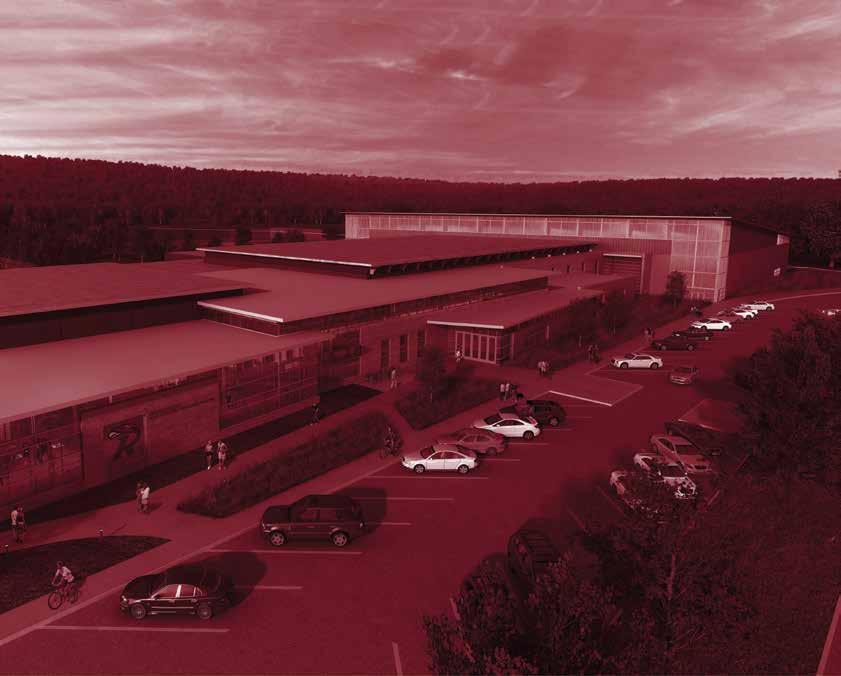
SUMMER 2017 | 37
300 West Seward Street
Ripon, WI 54971
ripon.edu
Change Service Requested
Flash BACK 1877
“Ripon’s emphasis on the sciences required special facilities and equipment. Early in his term, (first Ripon College President William E.) Merriman encouraged the development of a ‘Cabinet of Natural History,’ and over the years the College assembled a respectable collection of mineral and botanical specimens. In 1877, a small one-story frame building known as the Observatory or the Laboratory was constructed just east of the present site of Lane Library. Although used by all the sciences of the time, it was designed principally for chemistry and astronomy. … For a time, astronomy had to get along with a transit telescope and a ‘slit in the roof,’ but it soon acquired ‘a fine astronomical clock’ and a much larger telescope.”
Ripon College: A History , Pages 49-50

NON-PROFIT ORGANIZATION U.S. POSTAGE PAID PERM IT NO. 101














































 Joan-Marie Zech Gerth ’79 Oak Harbor, Washington
Joan-Marie Zech Gerth ’79 Oak Harbor, Washington
 John Pickerel ’68 Mesa, Arizona
John Pickerel ’68 Mesa, Arizona











































